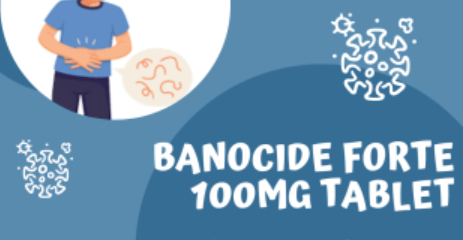Diethylcarbamazine Dosages: When to Take for Better Results?
- Health & Fitness
 limsonbros
limsonbros- October 21, 2024
- 2

Diethylcarbamazine over the counter is a medication primarily used to treat parasitic infections such as lymphatic filariasis, tropical eosinophilia, and onchocerciasis. These infections, caused by parasitic worms like filariae, are prevalent in tropical and subtropical regions. DEC works by killing the parasites and helping reduce symptoms associated with the infections. However, for the best therapeutic outcome, it’s essential to understand the correct dosage and the timing of administration.
In this blog post, we will explore the different dosages of diethylcarbamazine, when to take it for optimal results, and additional guidelines that can enhance its effectiveness.
What Is Diethylcarbamazine?
Diethylcarbamazine is an anthelmintic drug, which means it works by targeting and eliminating parasitic worms from the body. It was initially introduced in the 1940s and has since been an essential treatment for diseases like lymphatic filariasis. By disrupting the parasites’ normal life cycle, DEC alleviates the symptoms and prevents the infection from spreading.
The drug is available in tablet form, commonly under brand names like Hetrazan. It can be prescribed alone or in combination with other medications, depending on the type and severity of the infection.
Diethylcarbamazine Dosages for Different Conditions
Diethylcarbamazine dosing varies depending on the condition being treated, the patient’s age, weight, and health status. The duration of treatment also differs based on the severity of the infection.
1. Lymphatic Filariasis
Lymphatic filariasis is caused by filarial worms, which invade the lymphatic system and can cause severe swelling in the limbs (elephantiasis). The standard dosing regimen for treating lymphatic filariasis with diethylcarbamazine is typically 6 mg/kg/day, divided into three doses. Treatment duration often spans 10 to 14 days.
Example: For an adult weighing 70 kg, the daily dose would be approximately 420 mg, divided into three doses of 140 mg each.
In regions where lymphatic filariasis is endemic, DEC is sometimes administered in mass drug administration (MDA) programs to prevent the spread of the disease. In such cases, a single annual dose of DEC combined with other antiparasitic drugs (such as albendazole) is used.
2. Tropical Pulmonary Eosinophilia
Tropical pulmonary eosinophilia (TPE) is a respiratory condition associated with the body’s immune response to filarial worms. Patients with TPE often experience symptoms such as wheezing, cough, and difficulty breathing.
The dosage of diethylcarbamazine for treating TPE is also 6 mg/kg/day, divided into three doses, but the treatment duration is generally longer—lasting 14 to 21 days. In some cases, treatment may extend up to 30 days depending on the severity of the symptoms.
3. Onchocerciasis (River Blindness)
Onchocerciasis is a disease caused by the parasitic worm Onchocerca volvulus. It is commonly known as river blindness due to its severe effect on the eyes, leading to vision impairment or blindness.
While Mebendazole over the counter is effective against microfilariae (the larvae of the worms), it can cause serious side effects in onchocerciasis due to the inflammatory response triggered by the death of the microfilariae. Therefore, DEC is not usually the first-line treatment for onchocerciasis. However, if used, the typical dosage is 2 mg/kg/day, administered for a shorter duration to minimize side effects.
Patients are often given a lower starting dose, which is gradually increased to prevent severe reactions.
When to Take Diethylcarbamazine for Better Results?
The timing and frequency of taking DEC can significantly affect its efficacy and safety. Here are some essential tips on when and how to take diethylcarbamazine for optimal results:
1. Consistent Dosing Schedule
For the medication to be effective, it’s crucial to maintain a consistent dosing schedule. Diethylcarbamazine is usually taken three times a day, and spacing the doses evenly throughout the day helps maintain a steady concentration of the drug in your bloodstream.
For example, if you take the first dose in the morning, space the next doses by 6 to 8 hours. This ensures that the medication works continuously to kill the parasites without leaving any gaps for them to recover or multiply.
2. Take with Food
Diethylcarbamazine can sometimes cause gastrointestinal side effects, such as nausea or vomiting. To reduce the likelihood of these symptoms, it’s recommended to take the medication with food or after a meal. Taking the drug on a full stomach may also improve its absorption, allowing it to work more efficiently.
3. Complete the Full Course
One of the most important rules for taking diethylcarbamazine is to complete the full course of treatment, even if your symptoms improve before the treatment period ends. Stopping the medication prematurely may allow some parasites to survive, leading to a recurrence of the infection.
Make sure to follow the doctor’s instructions carefully and take the full prescribed dosage for the recommended duration.
4. Mass Drug Administration Timing
In countries where lymphatic filariasis is endemic, DEC is used in mass drug administration (MDA) campaigns to prevent the disease. The timing of these MDA programs is crucial for their success. DEC is typically administered once a year in combination with albendazole or ivermectin, as this strategy helps interrupt the transmission of the disease in the population.
Taking part in these annual programs at the recommended time is vital to the overall eradication of filariasis.
Possible Side Effects and Precautions
While diethylcarbamazine is generally well tolerated, it can cause some side effects, particularly as the parasites begin to die and are eliminated from the body. These side effects can vary depending on the individual’s health and the type of infection being treated.
Common side effects include:
- Headache
- Nausea
- Dizziness
- Joint pain
- Fever
More serious side effects, like allergic reactions or severe inflammatory responses, can occur, especially when treating onchocerciasis. If you experience symptoms such as intense itching, rash, or difficulty breathing, contact your healthcare provider immediately.
Additionally, individuals with a history of allergic reactions to antiparasitic medications or those with severe kidney or liver disease should inform their doctor before starting DEC. Special precautions may be needed to avoid complications.
Conclusion
Diethylcarbamazine is a powerful and essential medication in the fight against parasitic infections, especially lymphatic filariasis and tropical eosinophilia. However, its effectiveness depends on taking the right dosage at the correct times. Maintaining a consistent dosing schedule, taking the drug with food, and completing the full course of treatment are critical to achieving optimal results.
Before starting DEC, consult your healthcare provider to determine the correct dosage for your condition and follow their guidance throughout the treatment. By doing so, you can maximize the benefits of diethylcarbamazine and reduce the risk of complications.



